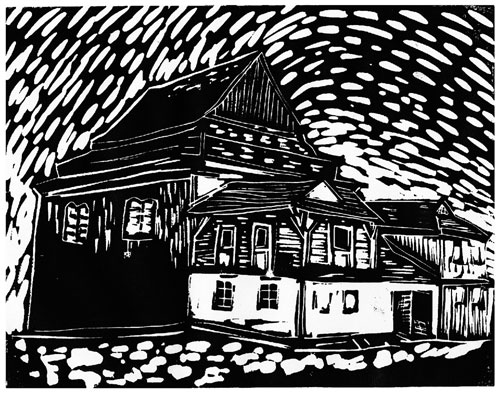Lost Treasures: The Wooden Synagogues of Eastern Europe The Artwork of Bill Farran
Zarechanka, Ukraine
Zarechanka, Ukraine
Yiddish Name: Zarechanka, Ukraine
Polish Name: Lanckoruń
The first reference to this town was when it bore the name Lyantskorun in the first half of the 16th century, named for the Lyantskoronski family, who owned the village.
The Jewish community was formed there in the same in the century. The Jews were almost completely eliminated during the Bohdan Khmelnitsky uprising. In the second part of the 18th century the residents of Liantskorun managed to acquire the right to hold fairs in the town. This caused a quick development in trade and attracted new Jewish residents as well.
Zarichanka was captured by the Germans on the ninth of July 1941. There is some information that the local population tried to help the Jews but there is nothing to substantiate this. In the summer 1942, all the Jews moved to the Ghetto in Kamenets-Podolskiy and were killed together with the local ones.
During the town’s liberation from the Nazis by the Soviet Army, it was renamed Zarechanka. A postcard from the synagogue was incorrectly attributed to the Polish town of Lanckorona. The Yiddish name, Lantzekronia, and the Polish name for the town, Lanckoruń, are so like Lanckorona, the name of a southern Polish town, that it is easy to see how an error could have been made.
Purchase a print
Original linocut prints are 8x10 inches, and are available either unmatted or in an 11x14 matte.
I also offer matted 5x7 digital prints. These prints are created from high-res digital images and come in an 8x10 matte.
